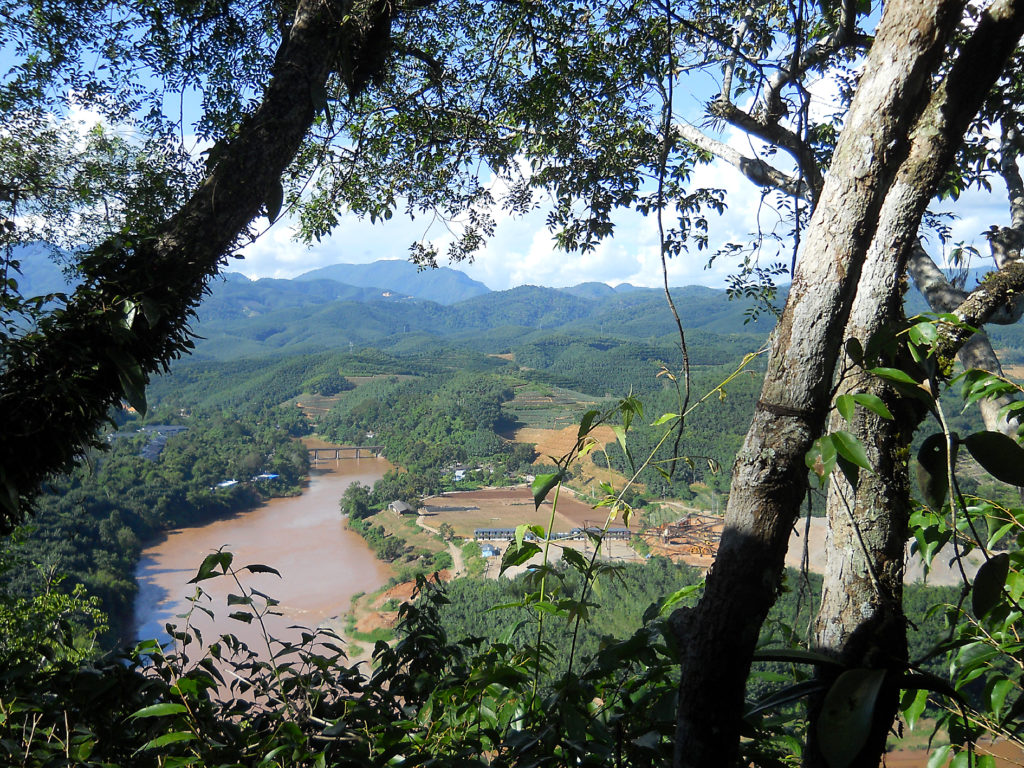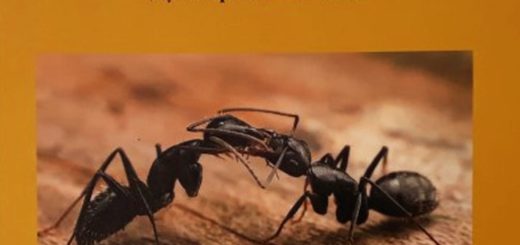Differences in ant geographic distributions in China between forests and rubber plantations
In the recent paper “Differences in geographic distribution of ant species between forests and rubber plantations: a case study in Xishuangbanna, China, and a global meta‐analysis” published in Myrmecological News by Mark Jun M. Alcantara, Shrushti Modi, Tial C. Ling, Jutamart Monkai, He Xu, Shuyin Huang, and Akihiro Nakamura, the authors present a study linking ant habitat association and biogeographic distribution. Here, Kevin Li highlights their main points.
A Review by Kevin Li

The authors of the study hypothesize that rubber plantation ants are more generalist and also more geographically dispersed. Their approach leverages literature search, a global database, and their own field data to compare the presence and distribution ranges of ant species found within rubber plantations with ant species found in forests in Xishuangbanna, China, and globally.

The hypothesis that generalist species have greater geographic distributions has been shown in butterflies (Börschig et al. 2013) but has not yet been tested in ants. Generalist species could be better adapted to a broader range of conditions, which allows them to spread farther geographically (Gaston 1996). Rubber plantations, as a simplified and disturbed environment, could select for more generalist species (Liu et al. 2016) and, therefore species with broader geographic distributions. The study estimates species biogeographic distributions using the antmaps.org global database (Janicki et al. 2016). Antmaps.org is an interactive visualization of the aggregated global ant species distribution data from museum collections, online specimen databases, and published literature. The authors note that this distribution data is limited by knowledge gaps and political boundaries. Nevertheless, the authors present an interesting and carefully considered analysis.

The authors conduct their own case study using leaf-litter collection and baiting-field methods to sample species richness from rainforest, limestone forest (which the authors argue provide similar habitat conditions as secondary forest for ants), and rubber plantations in Xishuangbanna, China. They compare results by whole assemblage (all ant species in each habitat type) and by habitat specialists (species found in only one of the habitats), and by comparing only arboreal or ground-dwelling ants. They find that, across all comparisons, the ants comprising rubber plantation assemblages are reported in more global regions of antmaps.org than the assemblages in rainforest or limestone forests, though this trend is only significant when considering entire assemblages or arboreal ants.
The authors also compare their case study results to a series of literature reviews of ant surveys within rubber plantations, primary forests and secondary forests. The authors demonstrate a consistent trend of ants with broader geographic distributions dominating rubber plantations, corroborating their survey results. Further analyses that accounted for possible sources of bias yielded similar results, e.g. including only Old-World ant community studies, excluding all species except ground-dwelling ants, or restricting the dataset to only SCI-listed journals. Of note, however, was that when the authors only considered native species, they found no significant differences in distribution ranges among habitat types.

Aki Nakamura demonstrating how to collect litter samples at the beginning of the fieldwork. (© Jingxin Liu) 
Transferring the litter samples into the Winkler bags. (© Akihiro Nakamura)
The authors conclude that the intensified and homogeneous habitat in rubber plantations is more favorable for generalist, wide-ranging, and non-native species at the expense of more specialized native species with smaller distributions. This pattern may represent the biotic homogenization of disturbed habitats due to loss of native species, which may affect ecosystem goods and services. Their findings also lend support to the hypothesis that generalist species have broader geographic ranges than specialist species.
The results and conclusions that the authors present are an important and timely contribution towards understanding the impacts of land conversion in Southeast Asia, a region with high biodiversity that is also experiencing high land conversion pressure (Sodhi et al. 2004). Rubber is a major and expanding crop in this region, so understanding its effects on biodiversity should be a priority for conservation (Warren‐Thomas et al. 2015).

Sorting time! Fortunate to have seven people and enough stereomicroscopes to finish sorting 19000 ants. (© Akihiro Nakamura) 
The results of days and nights of sorting ants in the lab. (© Akihiro Nakamura)
References
Börschig, C., Klein, A.-M., von Wehrden, H. & J. Krauss. 2013: Traits of butterfly communities change from specialist to generalist characteristics with increasing land-use intensity. – Basic and Applied Ecology 14: 547-554.
Gaston, K. J. 1996: Species-range-size distributions: patterns, mechanisms and implications. – Trends in Ecology & Evolution 11: 197-201.
Hakala, S. M., Seppä P. & Helanterä H. 2019: Evolution of dispersal in ants (Hymenoptera: Formicidae): a review on the dispersal strategies of sessile superorganisms. – Myrmecological News 29: 35-55.
Janicki, J., Narula, N., Ziegler, M., Guénard, B. &, Economo, E.P. 2016: Visualizing and interacting with large-volume biodiversity data using client-server web-mapping applications: The design and implementation of antmaps.org. – Ecological Informatics 32: 185-193.
Liu, C., Guénard, B., Blanchard, B., Peng, Y.-Q. & Economo, E. P. 2016: Reorganization of taxonomic, functional, and phylogenetic ant biodiversity after conversion to rubber plantation. – Ecological Monographs 86: 215-227.
Sodhi, N. S., Koh, L.P., Brook, B.W.& Ng, P.K.L. 2004: Southeast Asian biodiversity: an impending disaster. – Trends in Ecology & Evolution 19: 654-660.
Warren‐Thomas, E., Dolman, P.M.& Edwards, D.P. 2015: Increasing Demand for Natural Rubber Necessitates a Robust Sustainability Initiative to Mitigate Impacts on Tropical Biodiversity. – Conservation Letters 8: 230-241.








Recent Comments